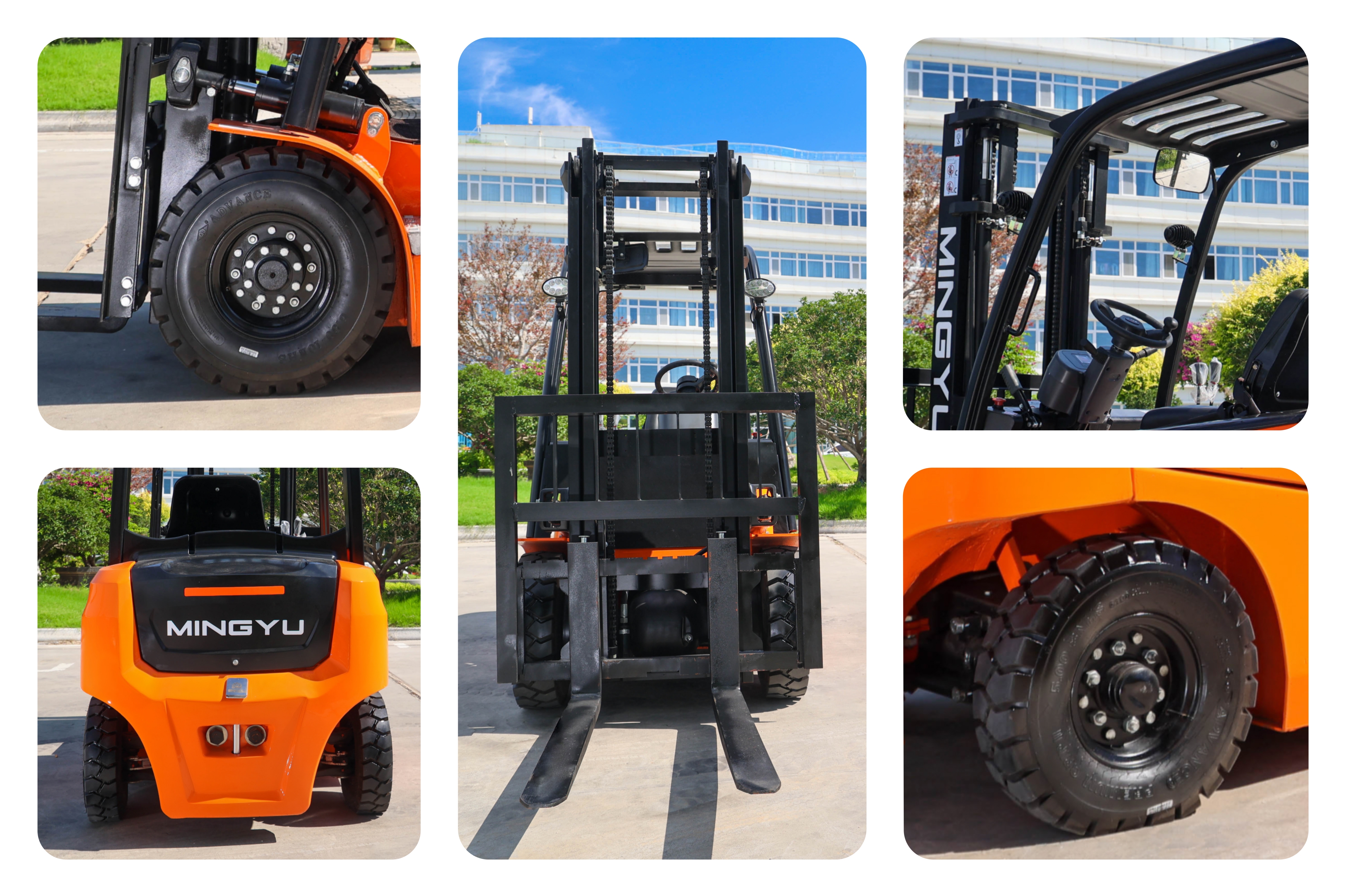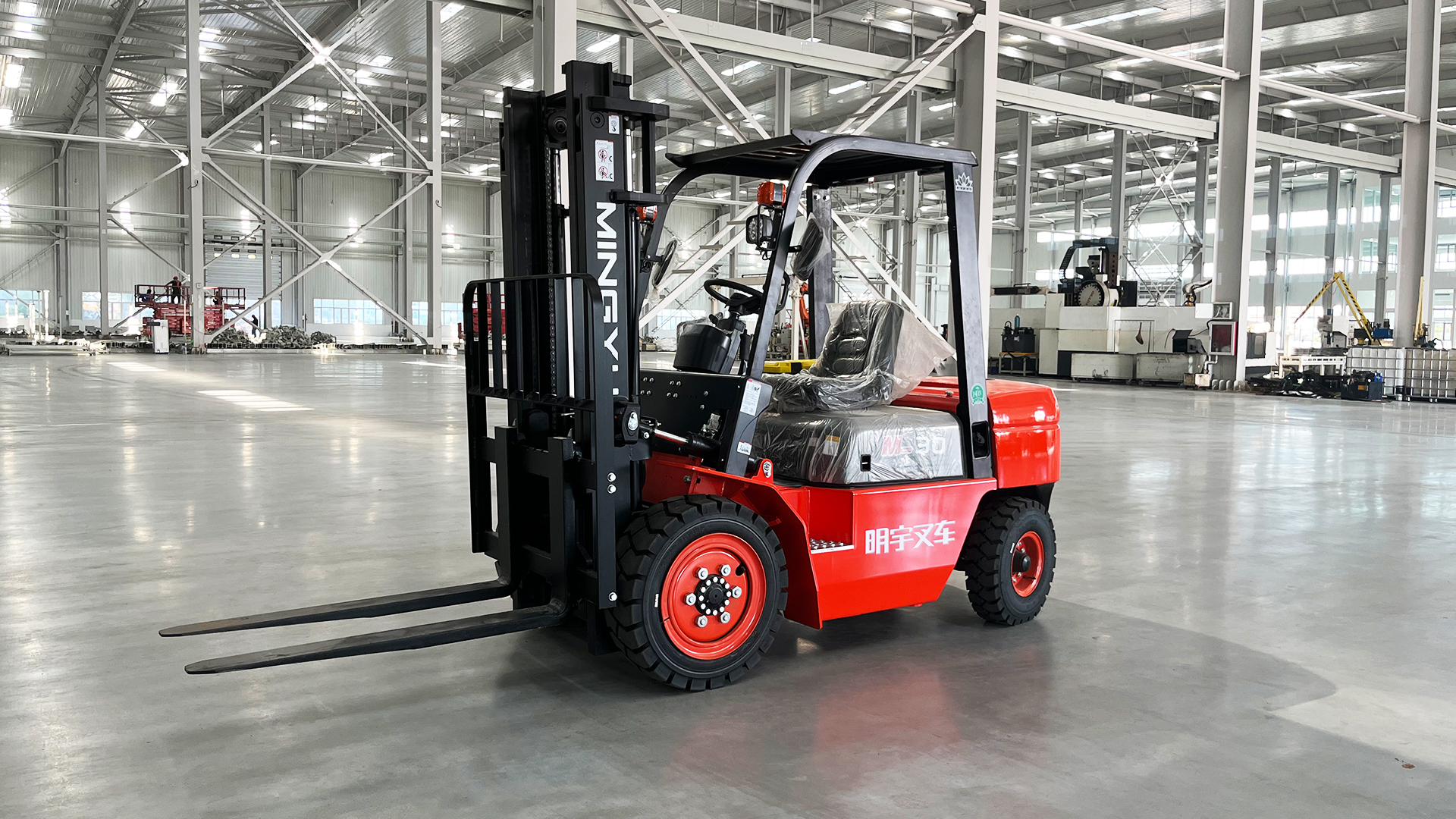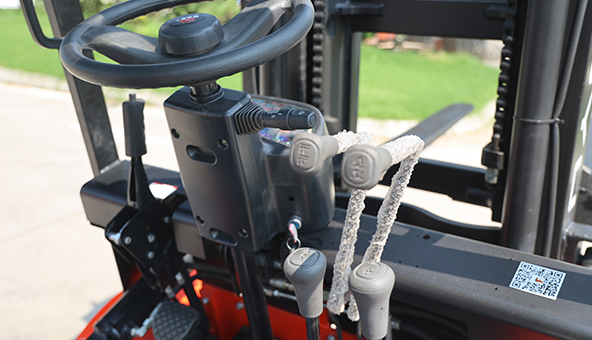How to Operate a Forklift
rerequisites for Forklift Operation
Before considering forklift operation, ensure you meet these prerequisites:
Age: Most jurisdictions have age restrictions for forklift operators.
Physical Fitness: You must be physically capable of operating controls and lifting heavy loads.
Training: Undergo formal forklift operator training from a certified instructor. This training should cover:
Basic forklift operation
Load capacity and stability
Workplace safety
Emergency procedures
Understanding Forklift Controls
 A typical forklift has the following primary controls:
Steering Wheel: Controls the direction of the forklift.
Throttle Pedal: Controls forward and reverse speed.
Brake Pedal: Stops the forklift.
Hydraulic Controls: Operate the forks, tilting them up and down and forward and backward.
Pre-Operational Checklist
Before starting the forklift, conduct a thorough pre-operational inspection:
Visual Inspection: Check for damage, leaks, or obstructions.
Tire Inspection: Ensure proper tire pressure and tread depth.
Hydraulic Fluid Level: Verify sufficient hydraulic fluid.
Battery or Fuel Level: Ensure adequate power or fuel.
Horn and Lights: Test their functionality.
A typical forklift has the following primary controls:
Steering Wheel: Controls the direction of the forklift.
Throttle Pedal: Controls forward and reverse speed.
Brake Pedal: Stops the forklift.
Hydraulic Controls: Operate the forks, tilting them up and down and forward and backward.
Pre-Operational Checklist
Before starting the forklift, conduct a thorough pre-operational inspection:
Visual Inspection: Check for damage, leaks, or obstructions.
Tire Inspection: Ensure proper tire pressure and tread depth.
Hydraulic Fluid Level: Verify sufficient hydraulic fluid.
Battery or Fuel Level: Ensure adequate power or fuel.
Horn and Lights: Test their functionality.
Safety Devices: Confirm the seatbelt, horn, and backup alarm are working.

Starting the Forklift
Seatbelt: Always fasten your seatbelt.
Parking Brake: Engage the parking brake.
Ignition: Turn the key to the "on" position.
Hydraulics: Raise the forks a few inches off the ground to prevent dragging.
Driving the Forklift
Neutral Gear: Ensure the gear lever is in the neutral position.
Release Parking Brake: Release the parking brake.
Throttle Control: Gently press the throttle to start moving forward or backward.
Steering: Use the steering wheel to control the direction.
Turning: Remember that forklifts turn using their rear wheels. Approach turns cautiously, especially in tight spaces.
Stopping: Apply the brake pedal to stop the forklift.
Loading and Unloading
Approach the Load: Position the forklift as close to the load as possible.
Lower the Forks: Lower the forks to the appropriate height.
Engage the Forks: Carefully engage the forks under the load.
Lift the Load: Slowly lift the load, ensuring it is stable.
Transport the Load: Drive slowly and smoothly to the designated area.
Set Down the Load: Lower the forks gently onto the designated spot.
Safety Considerations
Load Capacity: Never exceed the forklift's rated load capacity.
Load Center: Ensure the load is evenly distributed and centered on the forks.
Visibility: Be aware of your surroundings, especially when backing up or turning corners.
Pedestrian Traffic: Yield to pedestrians and other vehicles.
Floor Conditions: Avoid driving on uneven or slippery surfaces.
Emergency Procedures: Know how to respond to emergencies, such as fires or equipment malfunctions.

Additional Tips for Safe Forklift Operation
Training and Certification: Obtain proper training and certification to operate a forklift.
Regular Maintenance: Ensure regular maintenance of the forklift to prevent breakdowns.
Avoid Distractions: Stay focused while operating the forklift.
Wear Appropriate Clothing: Avoid loose clothing that can get caught in machinery.
Inspect the Workplace: Ensure the workplace is clear of obstacles and hazards.
Practice Safe Lifting Techniques: Lift with your legs, not your back.
Be Cautious on Ramps: Approach ramps slowly and avoid sharp turns.
Use Backup Alarms: Use backup alarms to warn pedestrians of your presence.
Know Your Limits: Don't attempt tasks beyond your capabilities or the forklift's limitations.
Conclusion
Driving a forklift requires skill, caution, and adherence to safety guidelines. By following the steps outlined in this guide and undergoing proper training, you can safely operate a forklift and contribute to a productive and accident-free workplace.

